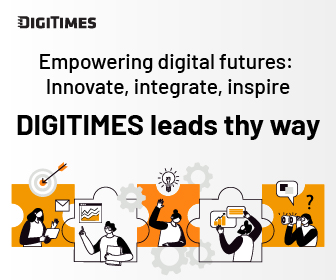During Qualcomm's latest earnings call, CEO Cristiano Amon described DeepSeek-R1 as a turning point for the AI industry, driving the shift of AI inference from the cloud to edge devices. He highlighted that DeepSeek-R1 strengthens Qualcomm's competitive position, as its chips are optimized for efficient on-device AI processing, reducing dependence on cloud-based computing.
DeepSeek-R1 supports model distillation, enabling users to train new AI models based on its architecture. This flexibility allows developers and device manufacturers to customize and optimize AI models to align with specific product requirements and performance objectives.
How DeepSeek is transforming the AI market
DeepSeek-R1 is accelerating AI adoption at the consumer level, empowering device manufacturers to train and deploy AI models tailored to their products. By offering an open-source alternative, DeepSeek-R1 reduces reliance on proprietary AI ecosystems, providing more flexibility in AI integration across various hardware platforms.
Meanwhile, in Western markets, Apple has partnered with OpenAI to develop Apple Intelligence. As DeepSeek gains traction in China, it raises the question: Could Apple explore similar collaborations to expand its AI strategy?
Apple's market position in China
According to Canalys, Apple's shipment volume in China is expected to drop to 42.9 million units in 2024, while Huawei's shipments are projected to rise to 46 million units. Although Apple's overall revenue continues to grow, its contribution from Greater China has decreased from 25% to 17%.
DeepSeek's growing adoption and potential Apple collaboration
Since Huawei embraced DeepSeek, a wave of Chinese smartphone brands—including Honor, Oppo, Nubia, and Meizu—have followed suit, alongside major hardware players like Lenovo. This growing momentum suggests that more Chinese device manufacturers will likely integrate DeepSeek into their AI ecosystems.
Recent Chinese industry reports indicate that Apple is exploring a potential collaboration with DeepSeek for Apple Intelligence. While no official partnership has been confirmed, Apple CEO Tim Cook has acknowledged DeepSeek's disruptive potential, hinting at its possible role in Apple's AI strategy.
While Tim Cook has not confirmed whether Apple Intelligence will incorporate DeepSeek, the model's rapid rise in China is hard to ignore. Within just two weeks, DeepSeek-R1 has gone from an industry niche to a mainstream AI solution, becoming a top choice for hardware manufacturers. As Apple Intelligence prepares to enter the Chinese market, its AI strategy and potential partnerships remain key areas of speculation.
Huawei's approach to end-device AI and DeepSeek-R1
Huawei has long positioned itself as a leader in end-device AI, independently developing large language models, operating systems, chips, and consumer products—rivaled only by Google in this holistic approach.
Huawei's Pangu Large Model has traditionally focused on industrial applications. However, its recent adoption of DeepSeek-R1—limited to HarmonyOS NEXT—suggests that Huawei is taking an experimental approach to consumer-facing AI. This raises questions about Huawei's long-term AI strategy and whether DeepSeek will play a deeper role in its ecosystem.
Huawei Device Business Group CTO Bruce Lee noted that DeepSeek-R1 saw strong initial adoption, leading the company to expand capacity. However, Huawei has yet to clarify whether it will fully integrate DeepSeek into its core AI framework.
At present, Huawei treats DeepSeek-R1 as an external AI enhancement rather than a deeply integrated core solution. The model serves as a supplementary tool rather than the defining framework of Huawei's end-device AI strategy.
Huawei's strategic considerations for DeepSeek integration
Huawei's measured approach to DeepSeek integration likely aligns with the broader development strategy of the HarmonyOS NEXT ecosystem.
Huawei appears to be carefully balancing its AI roadmap, possibly weighing DeepSeek-R1's role against its own Pangu Large Model. By positioning DeepSeek-R1 as an open-source external solution, Huawei may be testing its viability before committing to full-scale integration.
Despite DeepSeek-R1's efficiency, both Huawei and Lenovo acknowledge the challenges of hardware compatibility and power consumption. As a result, both companies are likely working toward more refined, power-efficient AI solutions for their devices.
With Apple Intelligence set to launch in China in the second quarter of 2025, local smartphone makers have already embraced DeepSeek as a competitive AI alternative. Industry watchers are now focused on Apple's next move—will it introduce an AI smartphone strategy tailored to the Chinese market?




